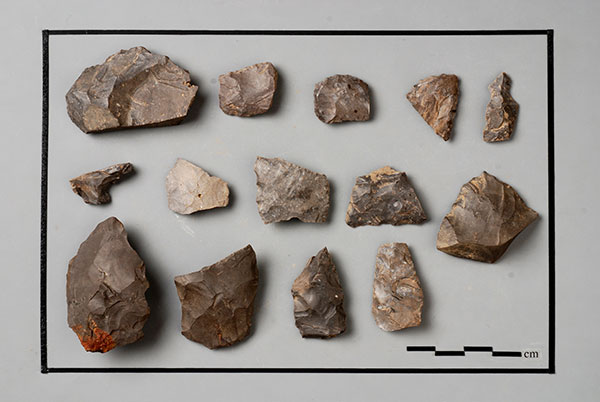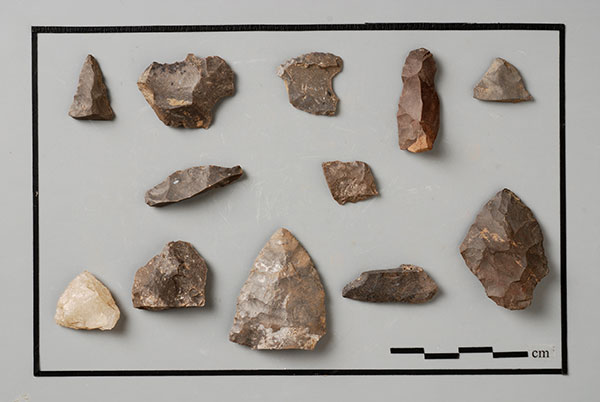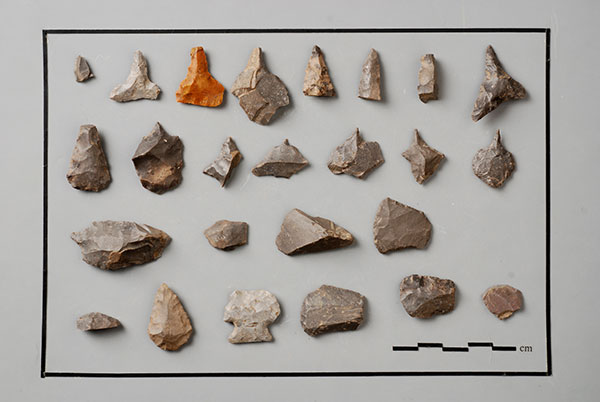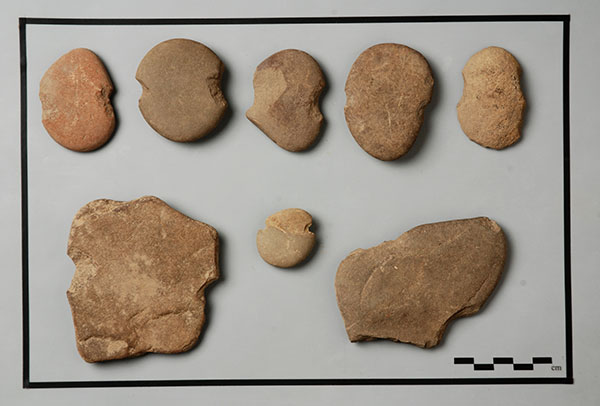Material culture was present in deep, stratified (layered) deposits dating to the Transitional, Middle Woodland, and Late Woodland periods. The following material is associated with the Transitional period of site use: 3 pottery vessels, 15 points, 15 point fragments, 21 bifacial tools, 6 unifacial tools, 4 retouched pieces, 3,188 flakes/cores, 18 rough or ground stone tools, 85 steatite fragments, and 2,503 fire-cracked rocks (FCR).

Associated with the Middle Woodland component are: 15 pottery vessels, 3 points, 1 point fragment, 13 bifacial tools, 1 unifacial tool, 2 retouched pieces, 1 drill, 418 flakes/cores, 1 chert blade, 2 rough or ground stone tools, and 3,101 FCR.

With the Late Woodland component are: 193 pottery vessels, 32 points, 32 point fragments, 166 bifacial tools, 20 unifacial tools, 28 retouched pieces, 9 drills, 9,091 flakes/cores, 6 gravers, 1 chipped stone chopping tool, 34 rough or ground stone tools, 4,512 FCR, and 10 clay pipe fragments.


The presence of the nonlocal raw material, jasper, in all three periods of site use suggests long-distance travel to quarries or regional trade networks with groups in southeastern Pennsylvania and the Mid-Atlantic. This is the same area from which the steatite at the site originated.